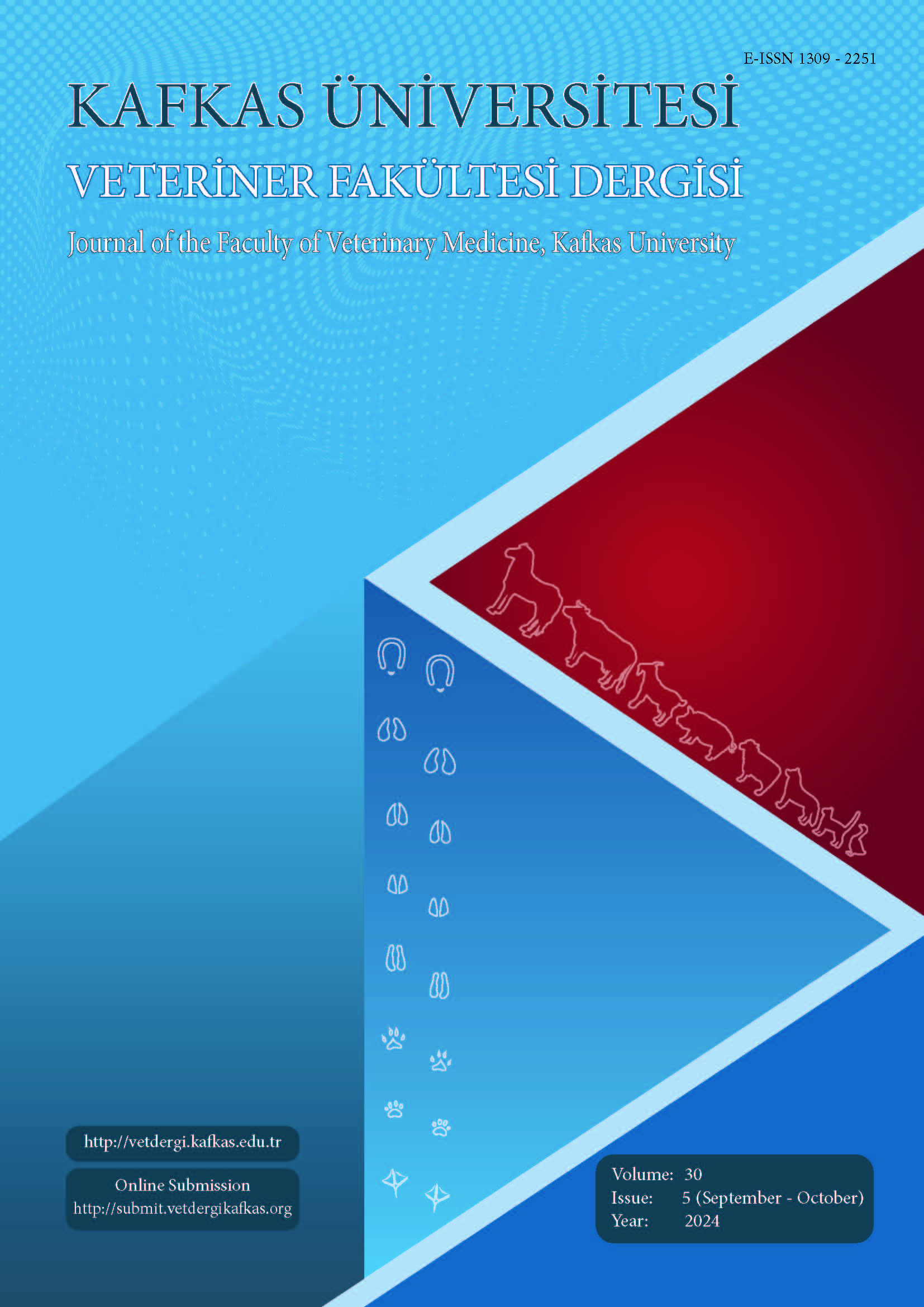
This journal is licensed under a Creative Commons Attribution-NonCommercial 4.0 International License
Kafkas Üniversitesi Veteriner Fakültesi Dergisi
2024 , Vol 30 , Issue 5
Phylotypes, Antibiotic Resistance and Biofilm Formation Determined in Enteropathogenic Escherichia coli Isolates in Diarrheic Cats
1Aydın Adnan Menderes University, Faculty of Veterinary Medicine, Department of Microbiology, Aydın, Türkiye
DOI :
10.9775/kvfd.2024.32343
This study investigated the phylotypes, biofilm formation abilities, antibiotic resistance
of enteropathogenic Escherichia coli (EPEC) isolates from cats with diarrhea. From 37
diarrheal cats, 28 E. coli isolates were obtained using conventional methods. Pathotypes
and phylotypes were determined via PCR, biofilm formation potential via Congo Red
Agar, and resistance profiles against eight antibiotics were examined using the disk
diffusion method, evaluated according to the Clinical and Laboratory Standards Institute
(CLSI). Chi-square tests assessed relationships between phylogenetic groups, biofilm
formation, and MDR statuses. The results were considered statically significant at a 95%
confidence interval and significance level of P<0.05. Pathotyping studies showed that
46% (13 isolates) of the isolates were EPEC. 93% of isolates were phylotyped. Seven
phylotypes were detected: B2 (22%), C (18%), B1 (18%), D (14%), A (11%), E (7%)
and F (3%). Of the isolates 39% formed biofilms and 86% were MDR. No significant
association was found between pathotype and biofilm formation or MDR. However, a
significant relationship was noted between pathotype EPEC and phylogenetic group B2.
The correlation between EPEC pathotype and phylotype B2 in diarrheic cats suggests
high pathogenic potential. Multidrug resistance, even in non-biofilm forming isolates,
complicates treatment and poses public health risks, underscoring the need for detailed
evaluation of E. coli diversity and zoonotic pathogens.
Keywords :
Antibiotic resistance, Biofilm, Cats, Enteropathogenic Escherichia coli










